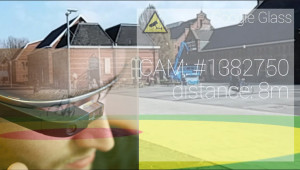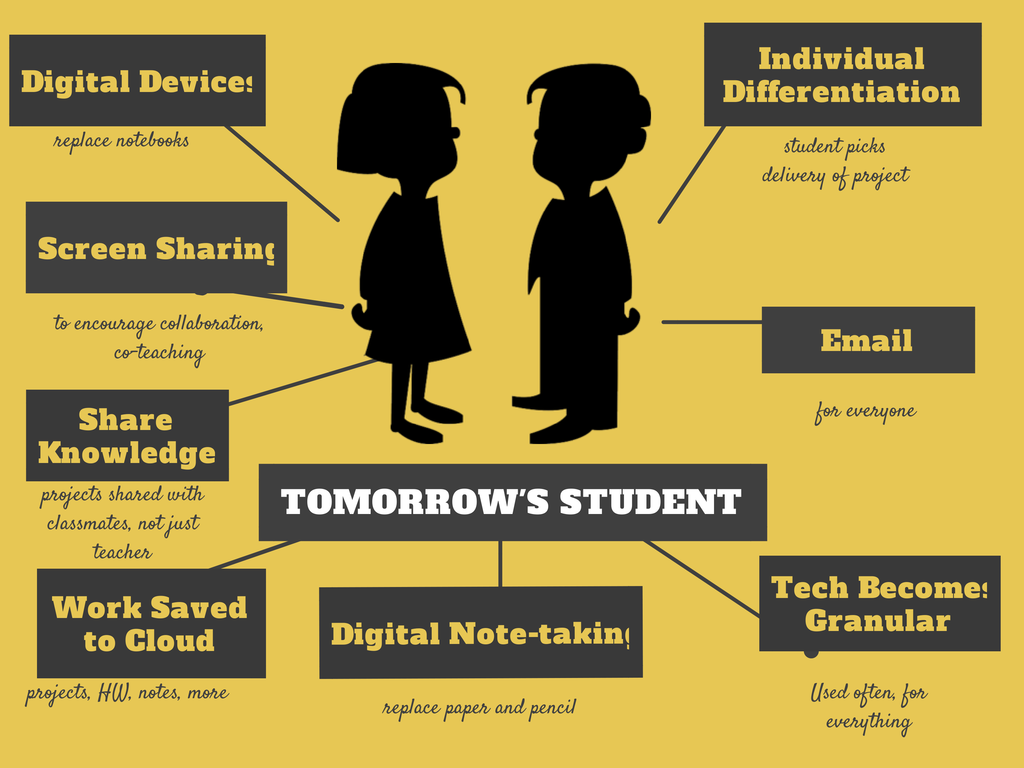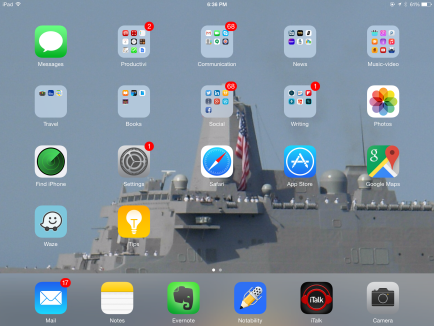 Just as the teacher’s job has changed from ‘sage on the stage’ to ‘guide on the side’, so too has the student’s job. Take a peek into the near future at tomorrow’s student. Today, you’d call this child the ‘techie’ minority. Tomorrow, s/he’ll be the majority.
Just as the teacher’s job has changed from ‘sage on the stage’ to ‘guide on the side’, so too has the student’s job. Take a peek into the near future at tomorrow’s student. Today, you’d call this child the ‘techie’ minority. Tomorrow, s/he’ll be the majority.
S/he is no longer a passive observer of his/her educational journey, expecting a teacher to impart knowledge that will shape his/her future. Tomorrow’s student takes charge of their learning, sifts through available options and selects what works for them, spirals up or down when required, asks for scaffolding when it’s lacking, accepts accountability for their progress as a stakeholder in the process, adapts to change as needed. They look for rigor in their learning environment and rise to the challenge when required.
These future students expect to collaborate, share, publish, contribute, and participate in a community of learners.
In some cases, the future has already arrived
What’s all that mean? Let’s add detail.
Use technology
While teachers may feel overwhelmed by the non-stop changes in technology, all but the geekiest students often feel the same way. Yet, truly, they are the ones who will benefit from technology so they will begin to accept its importance in support of their educational goals. That means they will decide:
- what program or tools work best for what inquiry
- how to decode tools that facilitate their learning, even if they’ve never before used them
- how to self-assess knowledge, insuring they got what they need
Early in their academic career, students already use a wide range of web tools that address varied needs of audience, task and purpose. Additionally, they learn new ones as needed.
Do you want to stop me here–say that’s your job, as ‘teacher’? If it is now, it won’t be soon. Your job in the future will be to empower students, show them the authentic applications of knowledge and its impact on their lives, to provide options. Their future will depend upon their ability to deliver.
Speak technology
If students want to become 21st Century learners but don’t understand the meaning of terms like ‘upload’, ‘cloud’, ‘icloud’, ‘publish’, they will fail to achieve their goal. They will use this domain-specific language in their daily lives, in their education endeavors. If they don’t know the meaning of a word, they’ll employ online dictionaries to decode it in seconds.
This isn’t geek-speak. This is using the right word for circumstances, like math and science terms.
Thrive in the digital world
Students in the future will be good digital citizens. They will understand that on the internet, they are not anonymous, that the digital neighborhood enjoys the same rights and responsibilities as any physical neighborhood. Sure there will still be cyberbullies, but no more than you’d see on today’s playground. The virtual world will be as real to the student as the physical world is today. Sure, that’s frightening, but an unknown future is a scary place.
Be problem solvers
Students will try to solve tech problems. They won’t immediately think figuring out why the monitor doesn’t work is the job of a teacher or their geeky friend. They’ll use common problem-solving strategies like:
- Use tools available to solve a problem
- Observe and collect data
- Be aware of surroundings
- Notice the forest and the trees
- Try to solve problems before asking for help
- Think logically
- Never say ‘can’t’
- Act out a problem situation
- Apply inductive reasoning
- Break a problem into simpler parts
- Distinguish between relevant and irrelevant information
- Draw a diagram
- Guess and check
- See patterns
- Translate data into mathematical language
- Try, fail, try again
- Use conjecture and evidence to develop valid rules and procedures
- Use proportional reasoning
- Use what has worked in past
- Work backwards
Learn non-traditionally
Classes will be available online as well as in-person. If students miss a class, they go to the online taping of it. If students can’t get to school, they participate through a real-time interactive class. No more snow days.
Classes are interactive. Students listen, work in groups, comment via the class backchannel, share work and knowledge with classmates as well as the teacher
Become excellent typists
Keyboarding is the future’s handwriting. It’s a core subject with the expectation that students will be accomplished typists early. The teachers set standards, answer questions, but the student pursues a curriculum with the help of parents, friends, all grade-level teachers, and real-time student get-togethers.
Some consider typing ‘old school’, being replaced by oral commands. They’re right, but it’ll take a while.
Share their knowledge
Students expect that their work is shared with others. They facilitate that with blogs, forums, Google Apps, cloud-based storage. Students are comfortable assisting others who don’t understand a topic as well as they do because the favor is returned. It’s part of what’s expected in school, like being polite and not swearing.
Here’s an infographic of what this future student might look like:
Tomorrow’s student is in charge.
Check out these articles on Edutopia’s take on education and Google Glass, David Thorburg’s many thoughts on 3D Printing in the classroom–and Gooru’s take on Microsoft’s Wearable Technology.
Jacqui Murray has been teaching K-18 technology for 30 years. She is the editor/author of over a hundred tech ed resources including a K-12 technology curriculum, K-8 keyboard curriculum, K-8 Digital Citizenship curriculum. She is an adjunct professor in tech ed, Master Teacher, webmaster for four blogs, an Amazon Vine Voice, CSTA presentation reviewer, freelance journalist on tech ed topics, contributor to NEA Today, and author of the tech thrillers, To Hunt a Sub and Twenty-four Days. You can find her resources at Structured Learning.





































Students of the future will be truly incredible. Education in schools will be almost unnecessary. All you need will be able to study online. Even a lot of online resources such as edubirdie.com/ca and other similar ones will be unnecessary and will simply disappear. I even think that in the future knowledge will simply be loaded into the brain and it will not be necessary to teach anything.
Clever that.
I completely agree with you, in fact, the future has already arrived, and people can learn online any interesting profession! I think that it is very cool that young people now have the opportunity to turn to training services on the Internet, our future is for such services. If you look at Microsoft, they also made their online courses for students, where they are taught the professions of the future! So, dear friends, the future has already arrived, it remains only to wait for us to start pumping information directly into the brain, as in the movie The Matrix!
Thanks for weighing in on this!
Check out these articles on Edutopia’s take on education and Google Glass, David Thorburg’s many thoughts on 3D Printing in the classroom–and Gooru’s take on Microsoft’s Wearable Technology.